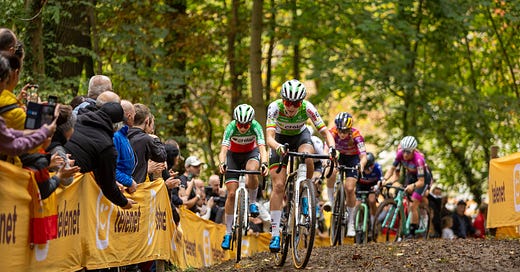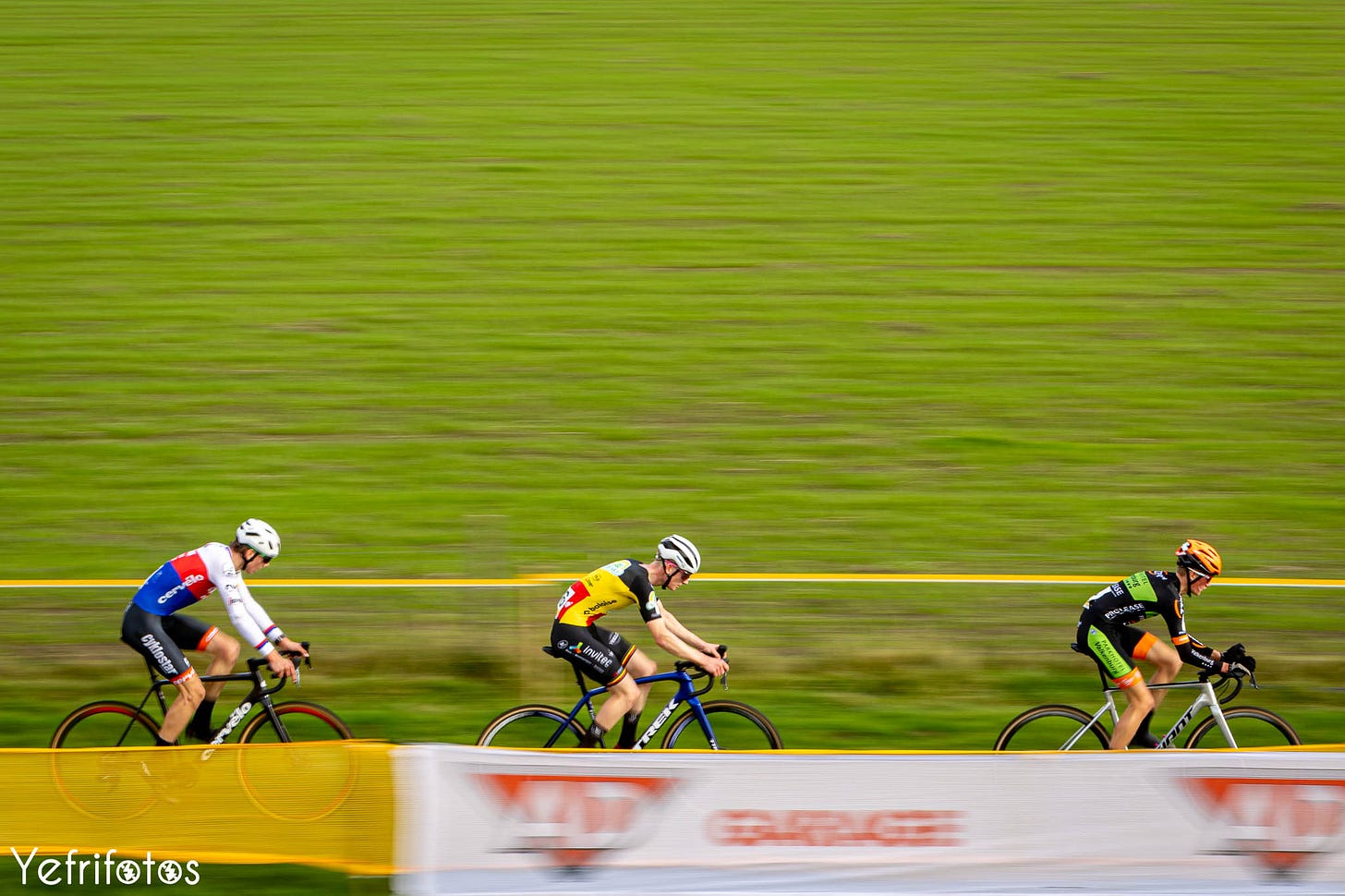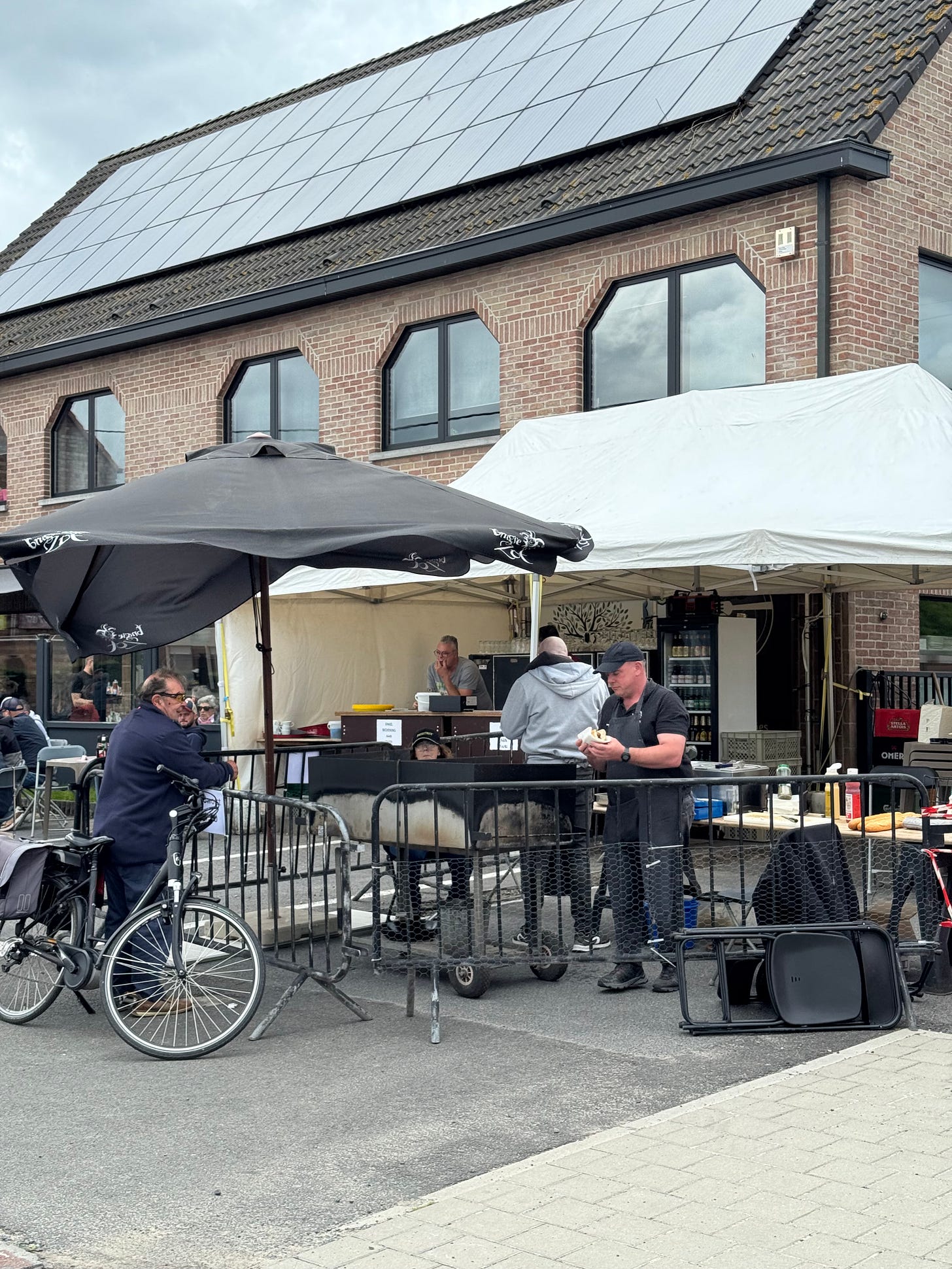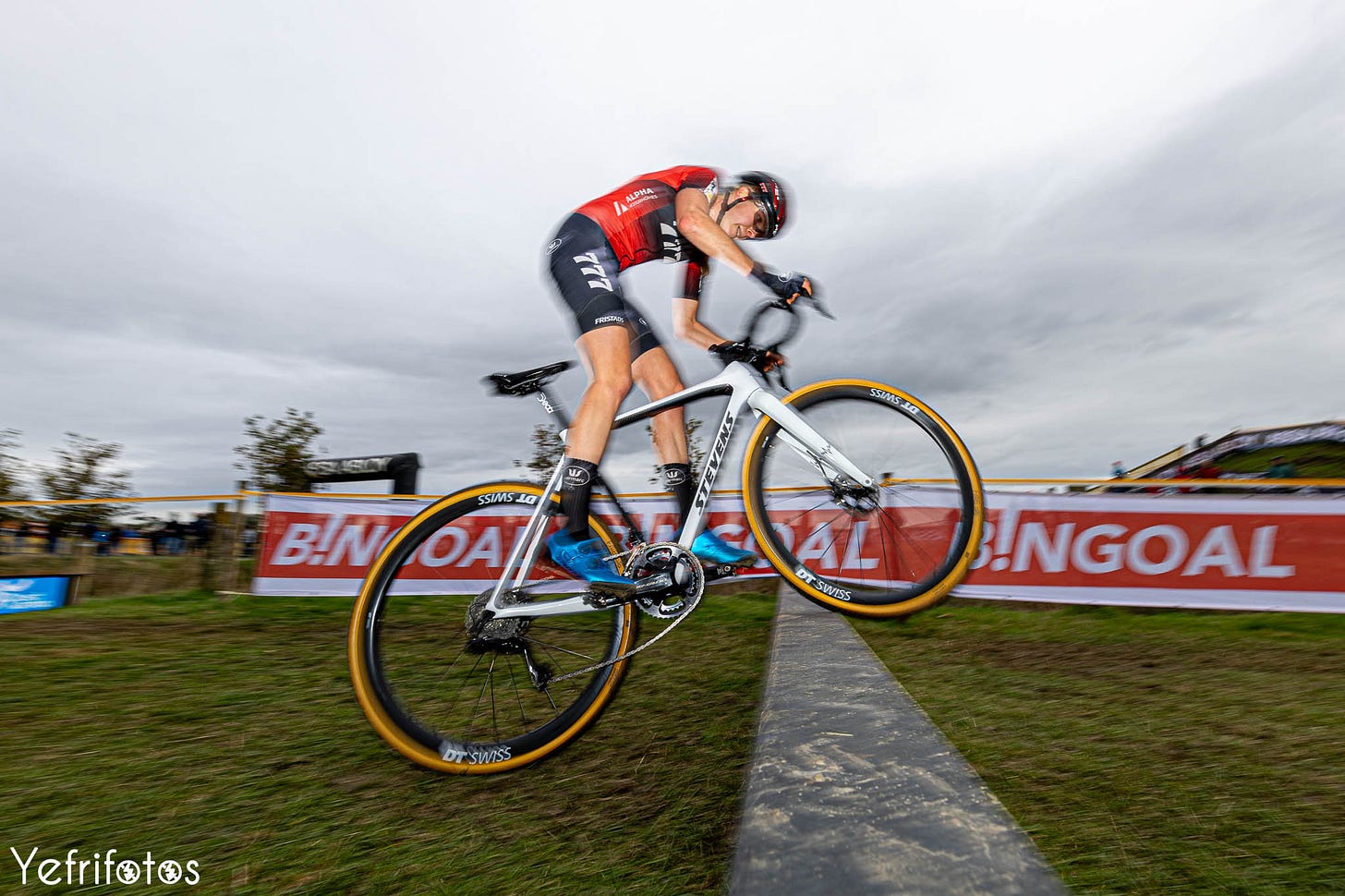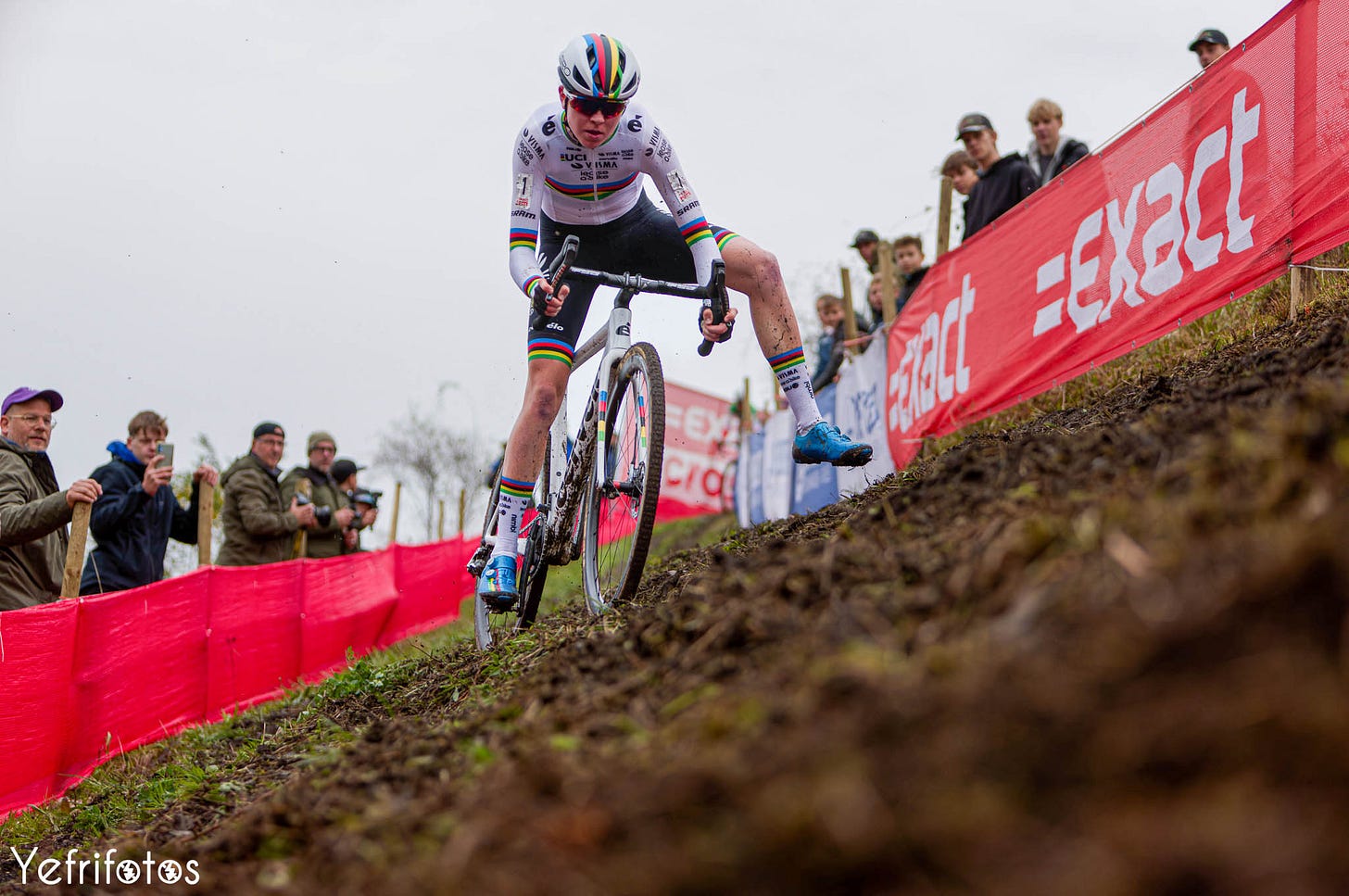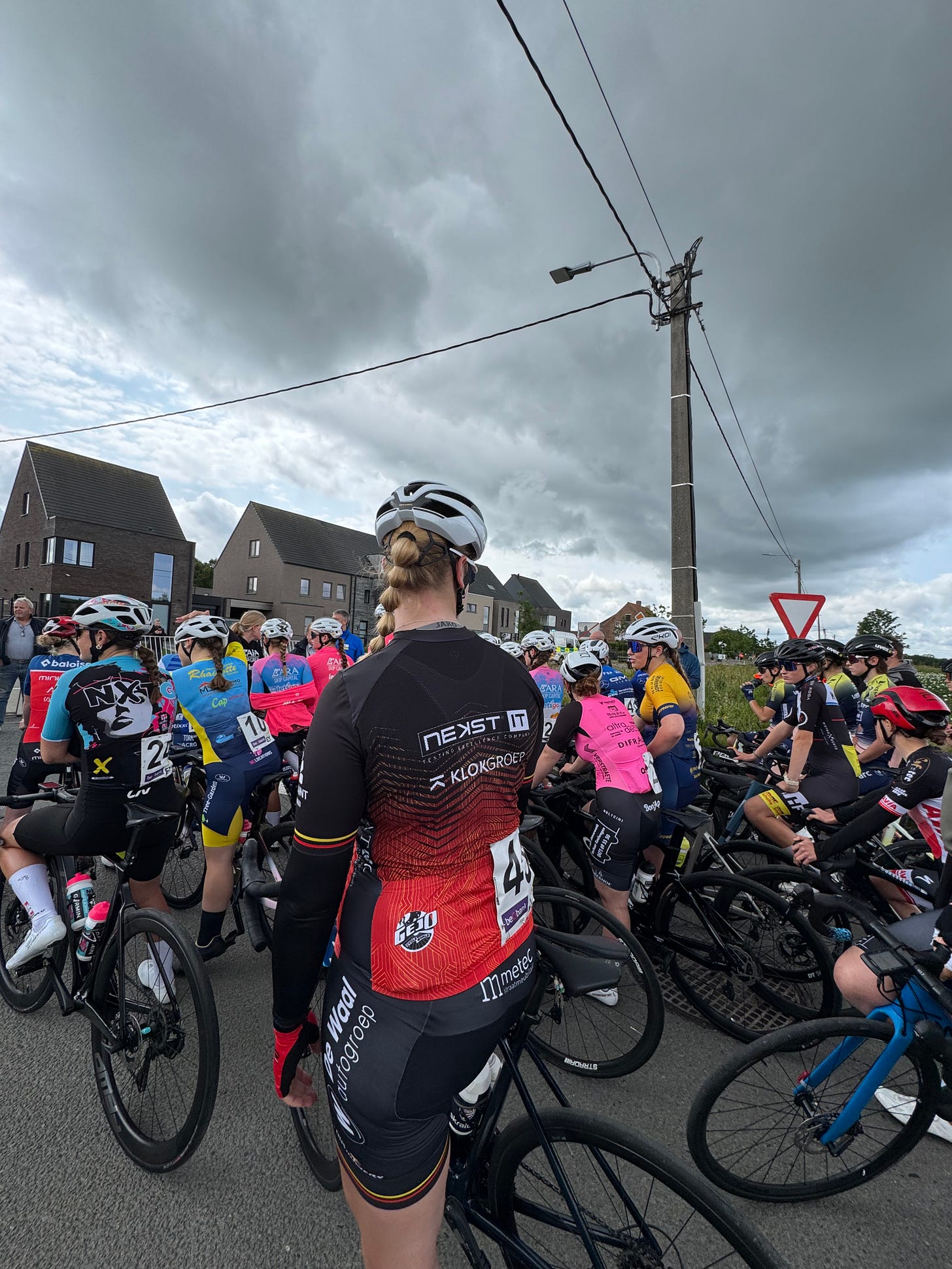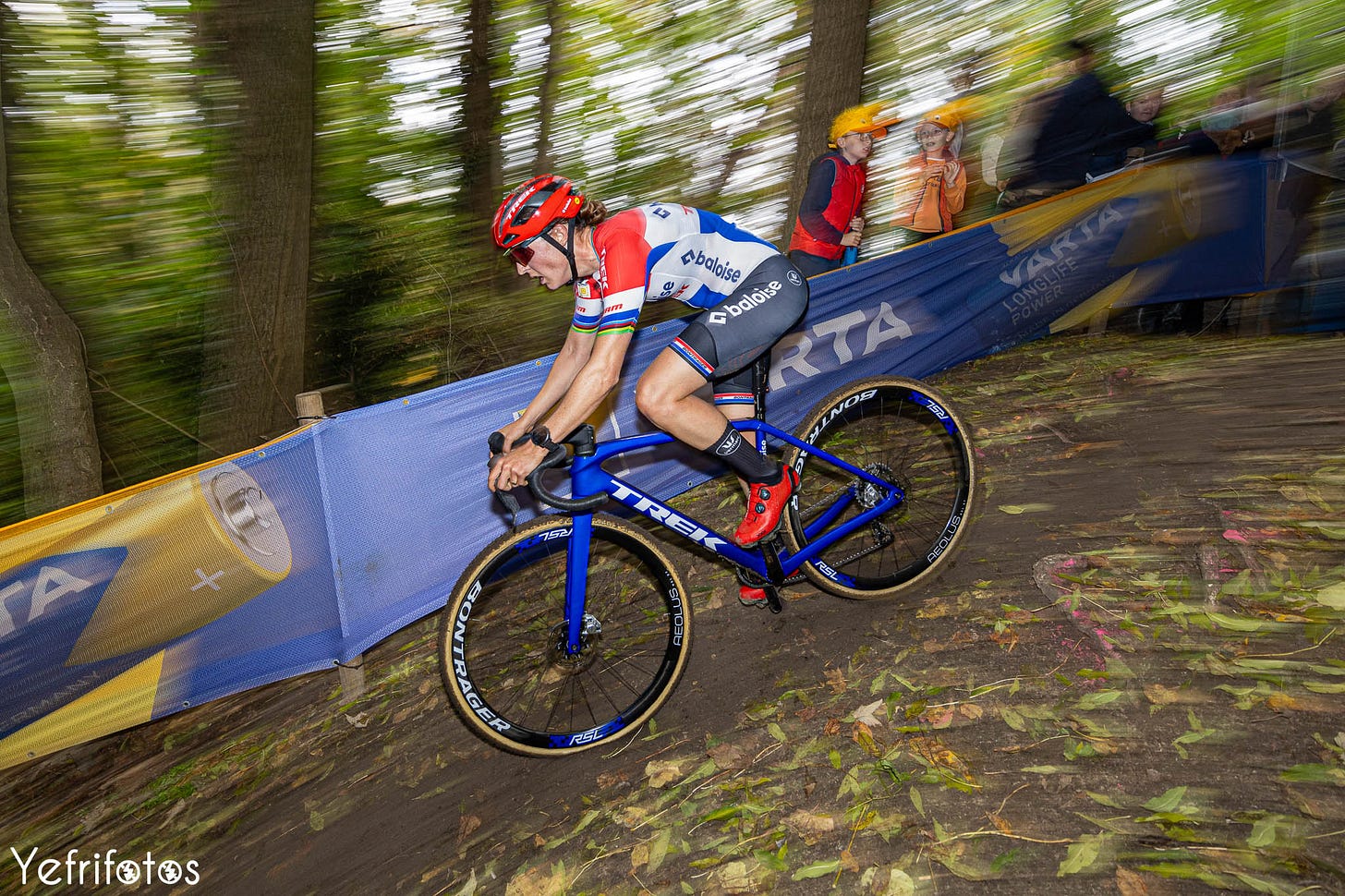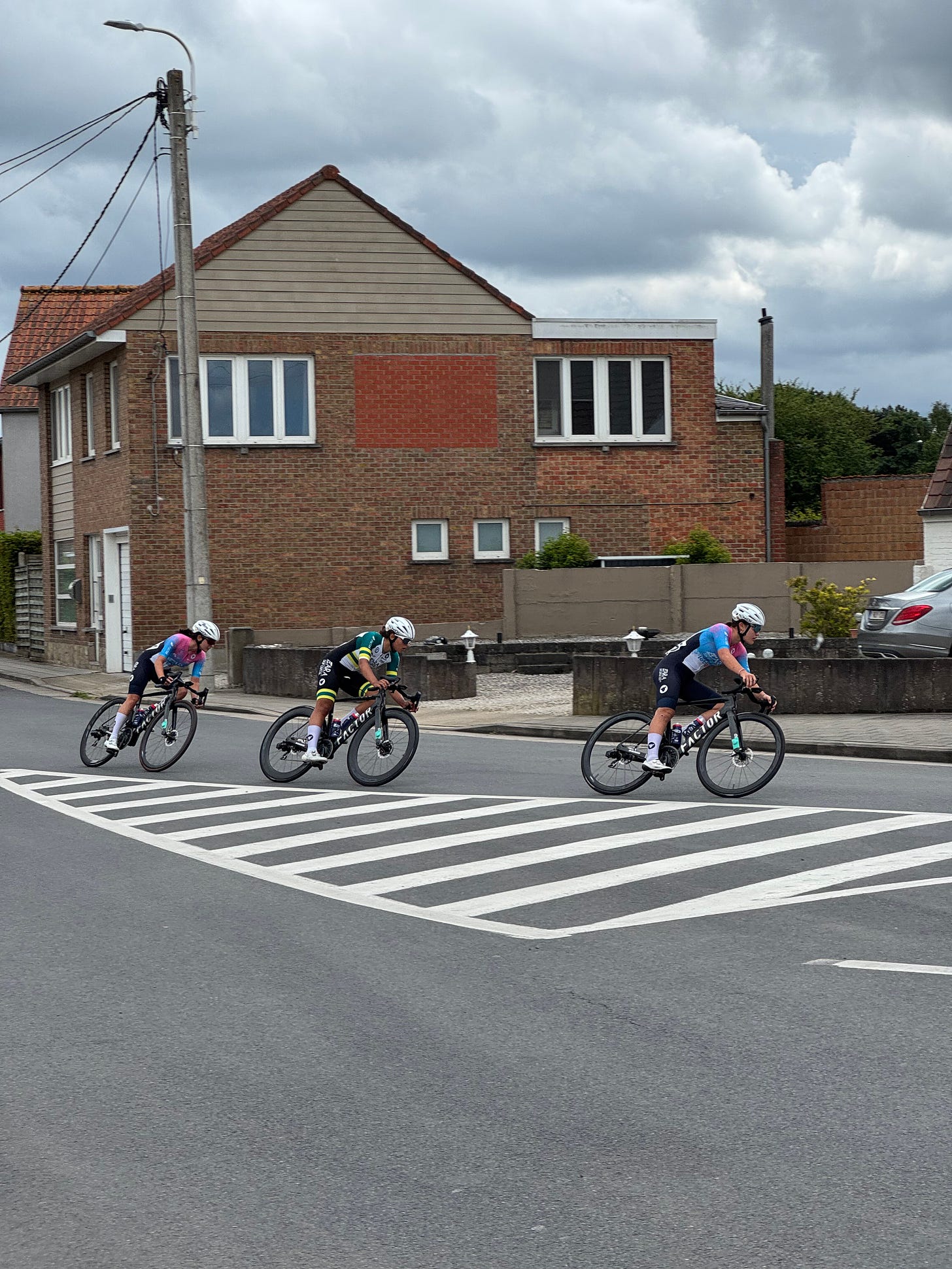Inside Cyclocross #44
What a local race in Zedelgem tells us about grassroots (women’s) cycling in Belgium
A perspective on grassroots (women’s) cycling in Belgium
Last weekend, our editor Noah visited a local road race deep in the Belgian heartland. From Zedelgem, he reports about the state of women’s cycling in Belgium and general struggles from grass roots events.
By Noah van Putten
Talent development - YefriFotos
Last Saturday, I pulled into a strangely modern parking lot in Zedelgem, Belgium. While most of the town is made up of old industrial-style houses and buildings, this parking lot and the Delhaize supermarket it belonged to had been completely refurbished and felt oddly out of place.
The reason for my visit to Zedelgem, however, wasn’t sightseeing. My younger sister was competing in a combined road race for U17 and U19 women. At first glance, the race appeared similar to many others held across Belgium: rider registration in the sponsoring café opposite the finish, a small stand selling burgers, beers, and hotdogs, a tiny trailer for the commissaires, a few police officers awaiting instructions, and a finish street with barriers (the safe kind!) on both sides of the road.
Yet what isn’t visible at first glance is that this was only the 13th national race for Junior Women this season. In that sense, the modernity of the race organizer fit surprisingly well with the rebuilt Delhaize and the entirely gold replica of the Statue of Liberty near the course.
Beer and Burgers
Women’s cycling, and especially cyclocross, has come a long way in recent years. Apart from Lombardia, all of the men’s Monuments now have women’s editions. All Grand Tours now include a women’s race spanning at least a week. Teams that traditionally operated only on the men’s side are now investing seriously in their women’s programs. Prize money has increased, and more races are being broadcast. The list of improvements continues, but work remains to be done.
In cyclocross, several key issues still need attention. First, UCI regulations require the men’s elite race to be held after the women’s race. The only time a women’s World Cup race was scheduled after the men’s was in Waterloo in 2017, and that required a special exemption for the organizers. This regulation ensures that men always race in the most favorable (Belgian/European) TV time slot. In biathlon, by contrast, the World Cup alternates the prime-time slot between men and women events, which has not resulted in lower viewership for the event held at prime-time. More people simply turn on their television at 15:00 than at 13:30. Similarly, in the Netherlands, women’s road races frequently draw higher viewership than men’s events. There is no reason to believe the general public lacks interest in women’s sports, although it sometimes needs a gentle nudge in the right direction.
Aniek van Alphen caught in the euroblur - YefriFotos
Beyond television coverage, the development structure for men’s cyclocross is far more robust than for women’s. Teams, Pauwels Sauzen in particular, invest significantly more in developing male juniors, partially because there are considerably fewer races for Junior Women. Despite UCI promises to mandate Junior Women’s races by 2021, this has not materialized. Although COVID-19 has been used as a convenient excuse, there has been ample time since to implement the policy ever since. Last year, the UCI seemed to have remembered their previous indentions and revived the exact same plans. Starting this season, organizers without a Junior Women’s race will be fined approximately 800 euros, the equivalent of the prize money for such a race. By the 2027–2028 season, all events will be required to include a Junior Women’s race, as has long been the case for Junior Men.
This winter, there is no financial excuse for race organizers to omit a Junior Women’s race. Still, the provisional UCI calendar shows that many organizers are not including one. Insiders have indicated that more races for Junior Women will be added to the calendar in due course, but we should expect some organizers to simply accept the fine due to concerns about low participation numbers.
Fem van Empel racing in Beringen - YefriFotos
The lack of Junior Women’s cyclocross races is particularly pressing in Belgium. While the country takes pride in being the capital of cyclocross, it hosted just three Junior Women’s UCI races in the 2024-2025 season, as opposed to 25 for Junior Men (World Cups excluded). In doing so, the “home of cyclocross” provides fewer race opportunities to aspiring women than, for example, Sweden, which held six races each for Junior Men and Junior Women.
As the graphic below illustrates, Belgium is not the only country where the number of Junior Men’s races far exceeds that of Junior Women’s. Czechia (10 versus 2) and the Netherlands (6 versus 2) also show significant disparities. While these differences are problematic as well, I have decided to focus more on them once the definitive cyclocross calendar for the 2025–2026 season is released.
For now, the focus remains on Belgium as their disparity has the greatest impact on homegrown talent. Belgium hosts a vast majority of top-level cyclocross races, meaning the start list quality is extremely high in superprestige and X2O events. In these prestigious elite races, Junior Women are far more likely to be lapped than in, say, your average race in Czechia. This limits the development opportunities for Belgian Junior Women and underscores the urgent need for structural change.
A comparison between races for junior men and junior women
When the Belgian press wonders, “Where is the next Sanne Cant or Lotte Kopecky?” part of the answer lies in the lack of races for young women. There simply aren’t as many races for U19 and U17 women as there are for men. Rather than racing riders of their own age, young women either have to race against boys or elite women. This is not an environment that encourages young girls to continue racing competitively.
For the development of women’s cycling, it’s not just important that the top of the pyramid grows by increasing prize money and the minimum wage in the Women’s World Tour. For growth to be sustainable, women’s cycling must also grow at the grassroots level.
However, as the announcer started naming the entire start list in Zedelgem, it also partially became clear why there are so few races for junior women in Belgium. There were more non-Belgian riders than Belgians who signed up for the race. Out of the 31 participants, only 15 were Belgian. There were large delegations from Australia and Germany, a couple of Brits, an Irish rider, and my sister as the lone Dutch participant. Most Dutch riders raced the national cup on the VAM Berg that day (55 U17s and 47 U19s took the start in Wijster).
Riders at the start in Zedelgem
The question is, what comes first? You need riders to organize races for, but more races will make racing more attractive for young Belgian women, leading to more cyclists in races. The latter seems more important because there are a lot of young women in Belgium who have a license at a club, but don’t race. Cycling Flanders has acknowledged this, but their campaigns to address it have been “put on hold” for the time being.
Then, there’s also a completely unrelated problem. Once the race in Zedelgem got underway, I started talking with Nico, a man who lives next to the final corner of the course. He told me the race had existed for as long as he could remember (at least since 2000!). However, he worried about the sustainability of the race, not for financial or security reasons, as local businesses always sponsor these races and the police in Belgium love guarding cycling events. His concern was about the number of volunteers needed to keep such races operational.
In recent years, Nico has seen many races in the region disappear: UCI race the Omloop van de Westhoek, local kermesses in villages near Zedelgem, and national-level cyclocross races have all shut down. For almost all of them, the reason was a lack of volunteers. A similar trend has occurred in the Netherlands, where local clubs and crits struggle to find enough people to volunteer to keep functioning.
According to Nico, society has become too individualistic, and people of his generation, he’s in his 40s, and younger are unwilling to help out for the greater good. He thought that once the older man organizing the race retires, it would probably cease to exist because younger people wouldn’t step up to organize events that yield no financial return.
Inge van der Heijden leads the pack in Overijse - YefriFotos
The race organizer himself, however, assured me the race would continue for many years. He wasn’t planning on stopping in the next five years and was already working on making the organizing committee younger. While he admitted that finding enough volunteers had been a bit of a struggle post-COVID, he always managed. Through the social network of his son, several young and enthusiastic new people have stepped in. It was at their suggestion that the U17–U19 women’s race got added to the program. Next year, they also hope to add a Women’s Elite–U23 race, provided they secure enough sponsorship.
While the future of the race in Zedelgem might be secured, Nico does have a point about the other races. Local races are under pressure, even in cyclocross. This winter we reported from one of those B-level races in Hever. As we wrote then, B races struggle with locations, as even in Belgium municipalities are becoming less enthusiastic about having their parks torn up for a race that only makes headlines in a few regional papers.
Lucinda Brand inn Overijse - YefriFotos
Ultimately, the pressure on these races isn’t just bad for young female talent. These races, far from the spotlight and sometimes referred to as “the trenches,” are where young cyclists learn the wheeling and dealing of cycling, whether on the road or in the fields. Without them, the cycling pyramid loses its foundation, and fewer riders climb the ladder to become professional cyclists.
The disappearance of national-level races is a complicated problem, and I don’t have an easy solution. While Nico blames individualism, I don’t have any evidence to back that claim. It’s also been suggested that aging populations in Europe play a role, and that fewer young people are taking up sports. Add to that the lack of a clear picture of who actually follows cycling, and the problem becomes complex and layered.
While I might not have a solution to this problem in Belgium, I can provide some perspective from where I live: the Netherlands. My country has its own issues with grassroots cycling, but one thing we have over Belgium is permanent cycling courses. Across the country, there are more than 40 closed cycling circuits. Fewer volunteers are needed to organize races or training sessions here, and it’s always safe for young riders to train. While this isn’t the same as racing a street crit or longer A-B race, it does offer some perspective for the future.
Australian domination
Between all the yapping I did, I kept a close eye on the race. There was, however, little suspense. The Australian ARA Skip Capital team dominated from start to finish, with three of their riders breaking clear in the second lap. Not only did they lock out the podium, but their lead over the peloton was so big that the peloton was pulled from the race with two laps to go to avoid being lapped. ARA finished 1–2–3–4–5–6, a level of dominance I’ve never seen before at any level.
At the podium, the son of the race organizer came up to me and said he was very grateful for all the international participants who took part in the race. During our conversation, he thanked me at least three times for “driving all the way (2.5h) here to race.” We got back in the car and passed the cross course of Ruddervoorde on the way to the highway. Just 128 days until the Superprestige kicks off here. Cross is Coming.

